When you think of viral marketing, your mind probably wanders to that Oreos "You can still dunk in the dark" tweet, which garnered an enviable 40,000 retweets and Facebook likes during 2013's Super Bowl power outage.
Or perhaps you think of the Dove "Real Beauty Sketches," a video with more than 67 million views to date.
When these global brands go viral, it's not a huge surprise.
Global brands have agencies and well-staffed marketing teams standing by to handle the good, the bad, and the ugly that can result when they go viral. But what happens to the little guys? What happens to small brands that hit on marketing gold, kind of by accident?
Below, we're taking a look at how small brands have handled their 15 minutes of viral fame. Some struggled, some succeeded, but all of them earned a spot on this elusive roster. Here's what they did, and what you can learn from their stories.
16 Small Brands That Went Viral
1. Dominique Ansel Bakery (The Cronut)
 Image Credit: CNN Traveler
Image Credit: CNN Traveler
Pastry chef Dominique Ansel was not a doughnut devotee. The French-born, New York-based bakery owner had tasted a few, but he was far more familiar with the croissants he had grown up eating. When someone pointed out that he didn't have a donut on the menu of his New York bakery, Ansel decided to head back to his roots and invent a new kind of pastry.
Enter: the Cronut.
Ansel's new confection really gained steam after a food blogger from Grub Street tried a Cronut and documented the experience. Traffic to the bakery website rose by more than 300 percent, and hundreds would line up every day to get their hands on the trendiest pastry around.
Viral best practice: Focus on quality, not quantity
Each batch of Cronuts took Ansel's team three days to prepare. They could make about 350 Cronuts every day in their bakery, which meant the numbers were limited.
By managing the output of his pastries and avoiding the draw of producing more than his team and facility could manage, Ansel created controlled demand that he could meet without sacrificing the quality of his product.
Four years later, you'll still find a line outside of Ansel's bakery before their 8:00 A.M. opening. But the true secret to his success? Ansel claims that he's had one Cronut every day since their invention. I'm really hoping that's the key to my next promotion as well.
2. Eva Kor and Candles
When my colleague, Kayla, was in college, she went to a nearby Holocaust memorial museum run by Auschwitz survivor Eva Kor.
Hearing Kor tell her story at Candles during the tour touched so many hearts in the community, including Kayla's. Kor's story is why a visit to Candles is essential to anyone visiting the area.
In 2017, BuzzFeed did a profile on Kor and the impact of Candles. At the time of this post, the profile video has 15 million views on YouTube alone, and over 100 million views on Facebook.
BuzzFeed's profile gave Kor a global platform to share a story of bravery and remembrance. A visit to the cherished local museum became a viral topic that captured the hearts of millions, just like it had in Terre Haute, Indiana.
Viral best practice: Local stories can capture the hearts of millions
A large number of people in Terre Haute will enthusiastically tell you about their first time at Candles. Now, millions of people know about Candles and get to spread that message. Additionally, to keep Kor's legacy remembered for future generations, in April 2019, two Indiana natives teamed up with PBS to release a documentary about Kor.
Everyone has a story to tell. Candles' story is one of bravery, passion, and perseverance, feelings to which everyone can relate. By telling your story, you could capture the hearts and attention of the masses, as well.
3. ALSA (The Ice Bucket Challenge)
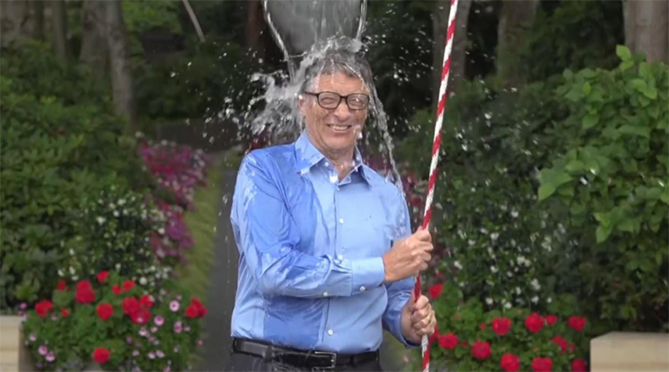 Image Credit: Iconosquare Blog
Image Credit: Iconosquare Blog
In 2014, the Amyotrophic Lateral Sclerosis (ALS) Association launched one of the most successful viral campaigns of all time. Justin Bieber, Oprah Winfrey, and Bill Gates were a handful of the celebrities who took the challenge and dumped buckets of ice over their heads to raise funds and awareness for ALSresearch.
By the time the videos had stopped filling newsfeeds around the world, the campaign had raised more than $220 million for ALSorganizations worldwide. Awareness of the disease rose and it reached the fifth most popular Google search for all of 2014.
In 2015, a year after the the ice bucket challenge went viral, money from the campaign was said to fund research that identified a new gene, NEK1, that contributes to the disease.
Viral best practice: They looked outside their target audience
True, most of those who made a donation during the video craze have never made a second. But overall A.L.S. contributions have stayed about 25 percent higher than the year before the challenge, and the average donor age has dropped from above 50 to 35.
By shooting outside of their target demographic and trying alternative marketing tactics (video) that might normally take a backseat to more traditional fundraising efforts (galas, email marketing, etc … ) A.L.S.A. was able to bring in millions in one-time donations, raise brand awareness, and gain an overall contribution baseline of 25 percent. I'd say that's enough incentive to shake things up in your next campaign.
4. Roman Originals (The Dress)
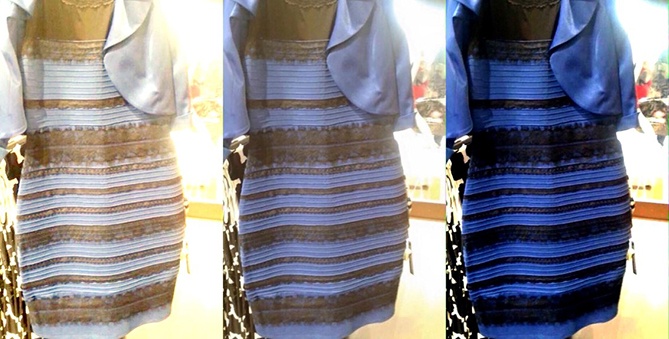 Source
Source
What happens when your company isn't even the one behind a viral sensation?
"We woke up one morning and had the world and media coming down upon us," says Peter Christodoulou, the co-founder of Roman Originals. It started with a wedding photo posted online. A young woman was pictured standing next to a bride, and no one could agree on what color her dress was.
What followed was an international debate dubbed #DressGate.
Christodoulou explained that his company had hoped to sell 200 of the lace-detailed dresses per week, but the UK-based retailer sold 3,000 in just 10 days. Celebrities, global brands, and just about everyone else was tweeting, sharing, and talking about "The Dress." At its height, the controversy sparked 10,000 tweets per minute.
Viral best practice: Other brands can and will capitalize on your success
Brands around the world capitalized on the craze and amplified the popularity of "The Dress." Dunkin' Donuts, Legos, and Tide were just a few of the brands that came out with clever dress-themed ads of their own.
A few months later, Christodoulou said his company "won the social media lottery. We've had a brilliant year … Hopefully our spring/summer 2016 range will be well-received."
While the line might not have sparked the global frenzy the original $74 dress had, Roman Originals showed the marketing world that virality can happen to anyone. And retailers everywhere showed that jumping on trending topics can do as much for you as it does for the company that originated the trend.
5. Blendtec
In the early days of YouTube, there was some interesting content floating around — cat videos, sketch videos, and, of course, a guy in a white lab coat blending a whole chicken and can of soda.
Tom Dickson, CEO of blender company Blendtec, saw early on that YouTube could be a great marketing tool. With the platform's emphasis on funny and quick content, the infomercial series "Will It Blend?" was the result of a minimal marketing budget and an experiment.
The series was built around Blendtec's flagship high-speed blender. To show the blender's power, the CEO decided to advertise that users could even blend household items. So, he put on a white lab coat, found a box of matches, and turned on a camera.
Dickson puts everything from golf balls, Amazon Echos, and my personal childhood favorite, Thanksgiving Dinner, to the test while cheesy game show music loftily plays in the background. (Spoiler alert: It always blends).
Gaining billions of views and great interest in the high-speed capabilities of a Blendtec blender, the company has now flourished into one of the most reputable brands in its industry. Popularity of the series led to the company's CEO appearing on an episode of NBC's "How I Made My Millions" , a show about startups that quickly found great success.
Viral best practice: Leveraging YouTube to create content that connects to the platform's audience
Having little resources as a startup, Dickson stumbled upon a hidden gold mine. His story shows how adoption of YouTube as a digital marketing platform can skyrocket a company, even without a high budget or television ad slots.
Eventually, themed content, such as holiday episodes (Christmas Dinner smoothie, anyone?) began rolling out to expand its reach among YouTube's audience.
Today, you can still go back and watch the "Will It Blend?" series on their YouTube channel. And of course, you can still purchase the blender and produce a few videos of your own (something else that became popular in light of the show's success).
6. Metro Trains Melbourne (Dumb Ways to Die)
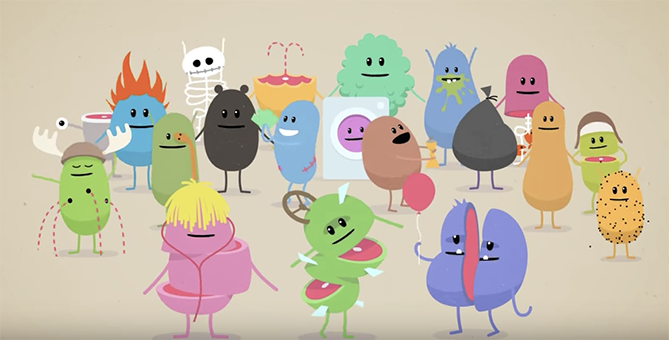 Source
Source
Are you already humming that catchy little song in your head? You're welcome for that all day.
Melbourne's metro system didn't have a safety campaign in market before "Dumb Ways to Die" (DWTD). They had information at stations, but nothing that was really influencing safe behavior or showing that the company cared, so they brought agency McCann Melbourne on to help.
Metro Trains' Chloe Alsop explained, "We kept coming back to the same thing: it's really hard to get hit by a train. A wrong or careless behaviour is required." Without a serious tone or tugging at heartstrings, an impactful, memorable, and shareable campaign was built.
By April 2014, the campaign had been viewed 77 million times on YouTube. The accompanying game became the No. 1 free app in 101 countries, and in six weeks, DWTD had garnered an estimated $60 million in earned media. The most important stat that came out of the campaign? A 21% reduction in railway accidents and near misses following the campaign.
Viral best practice: Launch outside your target market to build buzz
McCann created the original campaign using North American voices and characters because "the video had to go viral first, later it would catch the attention of the real target audience."
Today, the campaign has become a franchise used by metro transit around the world. The takeaway for us? As McCann spokesperson John Mescall says, "It used to be ‘Think global, act local.' That's no longer true; we need to think and act global."
The next time you launch a campaign, try thinking about where you might launch outside of your target market to build buzz.
7. Invisible Children (Kony 2012)
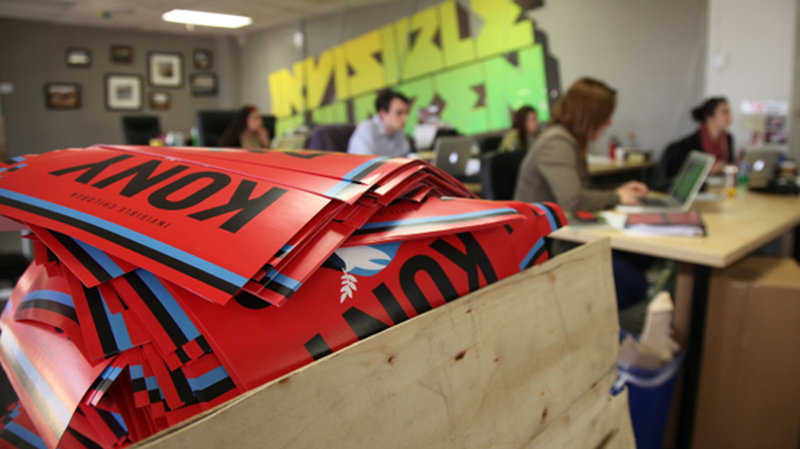 Source
Source
Invisible Children was around for eight years before Kony 2012 turned them into a household name. They got their start by showing a short film called "The Rough Cut" at high schools and community centers around the United States.
The goal was to raise awareness of Joseph Kony, a war criminal responsible for a decades-long civil war in Uganda and surrounding countries, and most maligned for his kidnapping and use of children as sex slaves and soldiers.
The group flipped Kony 2012, a 30-minute YouTube video, to public on March 5, 2012. It was not their first or their last video but it was their loudest. In six days, it garnered more than 100 million views becoming (for the moment) the fastest growing viral video of all time. As the days passed, however, criticism of the video, the organization, and its founders grew.
The San Diego-based company wasn't ready for the deluge of attention, traffic, or critique the video brought upon them. Invisible Children's co-founder and star of Kony 2012 received the brunt of the criticism, culminating in a public mental health breakdown a few days after the video's infamous launch.
Viral best practice: Have a PR plan in place
In 2015, three years after Kony 2012 ignited the internet's attention, the company shuttered most of its US operations. Joseph Kony is still at large, and Invisible Children's downsized African programs have honed their focus to early warning systems and defection messaging.
Kony 2012 is still a divisive subject, but it's also a cautionary tale for organizations whose aims to go viral may not match their infrastructure or readiness. Site traffic, man-power, and the lack of a PR agency/strategy all contributed to the chaos in the days following Kony 2012's launch.
8. Netflix's Bird Box
During the winter of 2018, it was pretty much impossible to access a Netflix account that didn't have an ad for a thriller starring Sandra Bullock plastered across the home page. We'll touch more on that a little later. First, some background history.
When Netflix released its original movie "Bird Box," the movie was watched by 45 million viewers in seven days. In tandem, viewers took to social media with memes and reactions. While the social media attention could be a huge culprit of some of the movie's widespread attention, it also could be something else.
Netflix's marketing team has an effective strategy outside of traditional marketing channels: the platform's own user interface (UI). Netflix decision-makers have complete control over what viewers see when they log in, so when "Bird Box" released, they made sure viewers knew about it, pushing the ad in the homepage slot.
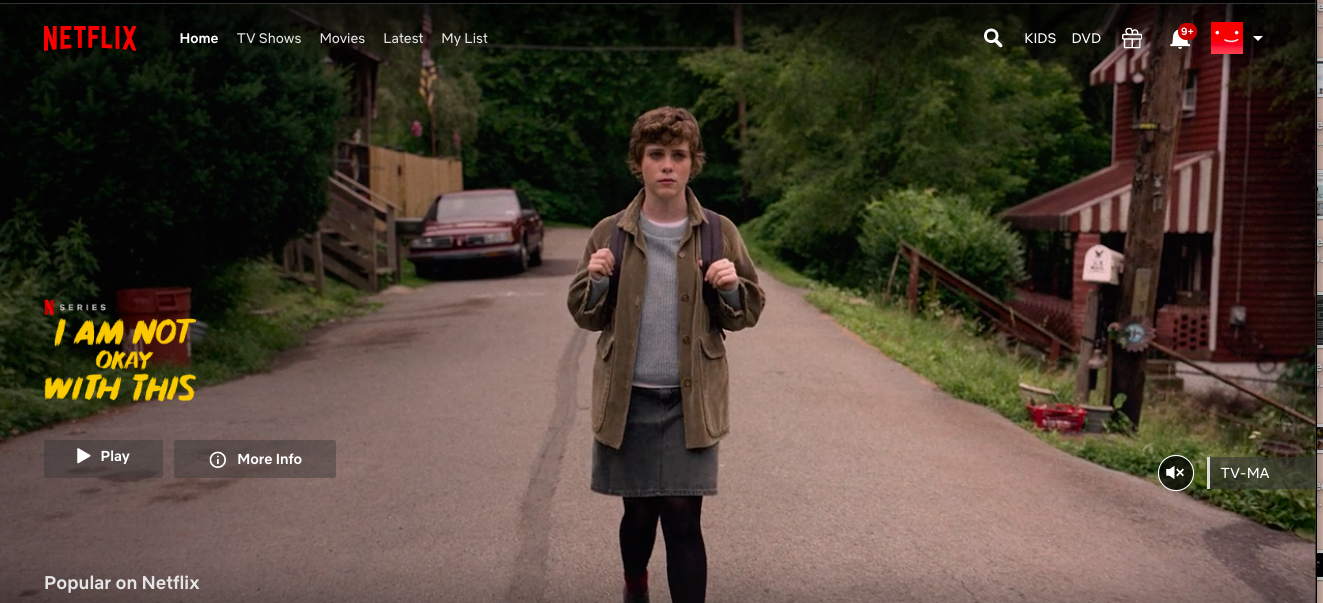 To illustrate, this is how much space a homepage ad takes up. Users see this every time they want to watch or search for something. Someone who watches Netflix after work everyday sees this ad — at least the movie title — at least 5X a week.
To illustrate, this is how much space a homepage ad takes up. Users see this every time they want to watch or search for something. Someone who watches Netflix after work everyday sees this ad — at least the movie title — at least 5X a week.
Mix an ad that's virtually impossible to ignore with automatic playback, and viewers with more time to stream content due to the holiday season, and the result is a perfect viral storm.
Viral best practice: Leveraging UI to be advantageous in a campaign
Netflix recommendations are tailored to what viewers want to see, but everything else about homepage design is decided by the company's team and gives great potential for their original content to go viral. For a streaming service with over 100 million subscribers, it's excellent exposure.
Sometimes, the perfect aid to a campaign starts with what you can do in your own wheelhouse. Marketing for "Bird Box" created interest for viewers with an auto-play ad on the site homepage. Maybe you can leverage one of your popular webpages, e-books, or social channels to similarly shine light on an upcoming product or service launch.
9. Sphero (Makers of BB-8)
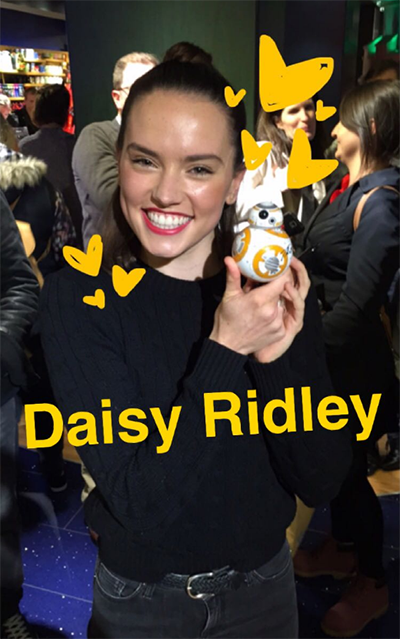 Source
Source
How did a small, Boulder, Colorado-based robotics company become the creator of spherical droid BB-8? Sphero was part of the inaugural class of Disney's Accelerator tech-development program, which helps companies expand creatively using Disney's impressive resources.
They happened to be in a meeting with Disney CEO Bob Iger as he was scrolling through offerings for Force Friday, a September 2015 toy and merchandising event held in anticipation of Star Wars: The Force Awakens. Iger asked the crew if they could make the rolling droid, BB-8, and they spent the next 10 months working on the product in time for a Force Friday launch. They sold more than a million robots in 2015 alone, more than doubling their all-time selling record.
Viral best practice: Use social media in new ways (and it doesn't hurt to have Disney on your side)
Sphero hit the jackpot with their Snapchat marketing campaign for Force Friday. The droid's creators waited in lines with throngs of Force Friday patrons, snapping the hype and excitement of fellow fans.
They leveraged the cast of The Force Awakens, along with Snapchat influencers at five flagship Disney stores around the world to build buzz about the movie and their robot.
It's been labeled the first global product launch using Snapchat, and the results were impressive with 10.3 million views, 4.76 thousand screenshots, 69.1 million seconds watched, and 411 thousand social engagements.
Sphero also handled media requests and newfound attention with Brandfolder, a Digital Asset Management (DAM) platform that kept their product photos, company information, and tech specs easily accessible and accurate. For your next product launch, how could you leverage social media in unexpected or nontraditional ways?
10. Niantic Inc. (Pokemon Go)
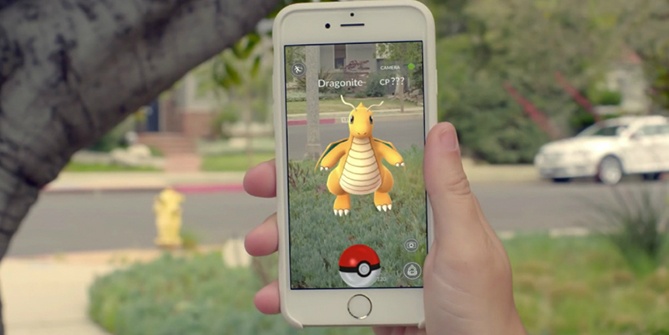 Source
Source
Are you still recovering? Is it still too fresh to talk about?
Niantic Inc. was as surprised as you likely were when Pokemon Go became a global obsession. The company had prepared their server load for game launch with a 'worst case' estimate of five times the normal volume.
What they got was an astounding 50 times the expected traffic —within 24 hours of the game's launch. But frustrated players and downed servers eventually gave way to 2016's hottest trend.
Viral best practice: Focus on quality and innovation
After launch, the creators of Pokemon Go ironed out those kinks and continued to innovate on their product. They still release special, limited-time offerings like their ghost-themed Halloween event which saw a 1.3 billion increase in Pokemon caught by players, and a user spike of 13.2 percent globally.
Niantic also resisted the urge to monetize things too soon on a large scale. Instead, they focused on "core game mechanics, learning things on the technical side, the ops and customer support side, the community and marketing side."
A more natural way for them to monetize early on? Quigley says, "We're encouraging people to get out and about in their neighborhoods, their cities, their communities —what more natural way to integrate someone into the game than to have these paid sponsor locations that are interleaved among their other locations?"
Pokemon Go is a success story of a company that wasn't expecting success but, by focusing on creating a quality product and resisting the urge to monetize too soon, was able to create not only a global sensation but a lasting one.
11. Popeyes' Chicken Sandwich
So much has been said about the Popeyes chicken sandwich storm that exploded on social media in 2019. According to the CEO, because of taste and word-of-mouth, they just got lucky.
After a well-performing tweet, it seemed as if overnight, everyone had to get their hands on this sandwich.
Craze over the chicken sandwich grew to be so large that Popeyes ran out of chicken, drove sales up 16%, rose profits 13%, and caught the eye of their competition. Additionally, the response was so great that competitor Chick-fil-A got involved.
... y’all good? https://t.co/lPaTFXfnyP
— Popeyes Chicken (@PopeyesChicken) August 19, 2019
Needless to say, Chick-fil-A's response to Popeyes's turn in the chicken sandwich spotlight backfired.
Viral best practices: Use social media user-generated content to spearhead a campaign.
In essence, the CEO was right: they were just lucky. One viral tweet about the chicken sandwich inspired others to post their reactions, participation from competitors only helped, and online tutorials were popping up everywhere.
Now, the team at Popeyes knows their audience behavior, and they've learned that posting on social media, where their audience is active, is the way to drive sales. Take the creation of their clothing line, for instance.
Announced on Twitter as a thinly veiled response to Beyonce's athleisure brand Ivy Park, That Look From Popeyes was a real launch, and every item sold out. Social media is at the forefront of their campaigns, mixing pop culture into their brand to be more relatable to audiences.
The chicken sandwich wars showed that knowing your audience and connecting to them can yield great results. Though every tweet might not go viral, you'll build a loyal customer base that feels understood by your brand with consistency and relatability.
12. Cards Against Humanity
 Source
Source
You know it, you love it, and you're embarrassed by it when your mom asks what it is. Your answer is invariably, "It's like Apples to Apples … but different."
This self-proclaimed "party game for horrible people" did not come from some hip Silicon Valley incubator. Instead, it was the brainchild of eight friends who'd known each other since grade school in their hometown of Chicago. They had no major outside investment, unless you count their one small crowdfunding campaign on Kickstarter, and it took them a while to even have a business address. "Our main priority is to be funny -- and to have people like us," says game co-creator Max Temkin.
Viral best practice: Know your brand voice (and stand by it)
Cards Against Humanity has always taken an unorthodox approach to marketing. You can download the full game for free on their website (something more than 1.5 million people have done). They once ran an anti-sale for Black Friday where they priced the game, normally $25, at $30 a box. With a tagline of "Today only! Cards Against Humanity products are $5 more. Consume!" the company inexplicably sold more cards. Their marketing strategy (or anti-strategy) would make most marketers cringe, but it works for them.
2016's Black Friday campaign featured live video of the company "digging a holiday hole" and asking people to donate to its "cause." They raised close to $30,000 with the stunt. Most recently, they launched their first-ever Super Bowl ad featuring nothing but a potato and a clever article about why the ad "failed."
Cards Against Humanity is one of the clearest cases of knowing your brand voice and sticking with it. Their copy, creative, and campaigns are uniquely their own, and uniquely unapologetic about it, just like their game.
13. Chubbies
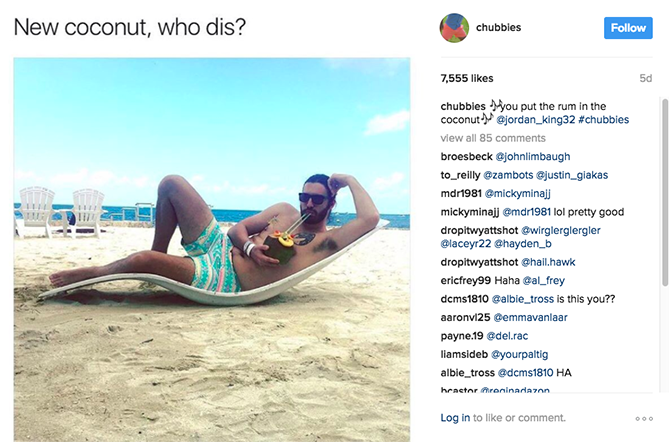 Source
Source
Love 'em, hate 'em, or loathe 'em, Chubbies is here to stay. The founders were four Stanford buddies who bonded over their mutual love of short shorts. Says co-founder Tom Montgomery, we noticed that "If you had a really cool pair of shorts, people would talk about it." They decided to test their idea for Chubbies out at a Fourth of July beach party before going all in. They donned their "Chubbies," headed to Lake Tahoe, and quickly found "the shorts struck the same emotional chord with other people that it struck with us."
Their website launched in September 2011, just a few months before winter, giving them time to prepare for the busy spring months. Chubbies' team spent that time building up inventory and marketing to their target audience: fraternities.
Witty emails, unapologetic copy, and bro-friendly photography set them apart, and their guerilla-style email tactics spread their name and their product through college towns everywhere.
Viral best practice: Build a strong narrative before you go viral
In 2014 they raised a $4.4 million round of funding and a steady growth curve followed. They've expanded beyond their signature shorts but continue to build the brand around what made them successful in the first place -- the weekend. "We're constantly building this brand around the weekend and the feeling you get around Friday at 5 p.m. When a guy throws them on, the stress and rigors of the work week can be put on hold for a bit."
That connection to their brand identity creates a strong narrative in their marketing efforts across channels. They speak to their audience unwaveringly, and their audience responds.
14. James Frey (A Million Little Pieces)
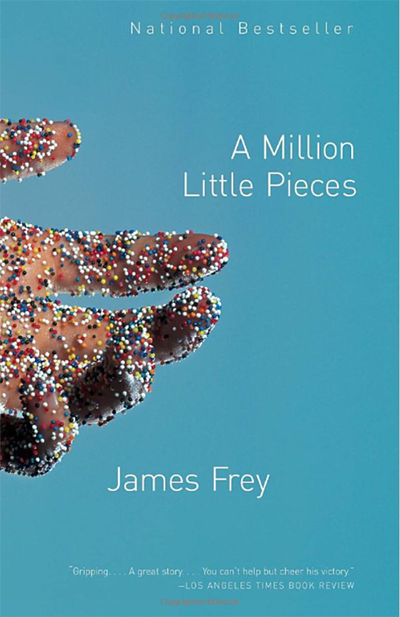 Source
Source
Author James Frey had an explosive product launch in 2005. His book, A Million Little Pieces originally marketed as his memoir, was catapulted to overnight success after being named on Oprah's television book club.
Two million copies were sold, making it the fastest-selling book in the club's 10-year history. It topped the New York Times Best Seller list for 15 straight weeks and was published in 28 languages by 30 different publishers all over the world.
Unfortunately, months after Oprah lauded his bravery as well as his book, it was revealed that his memoir was more fiction than fact. Winfrey publicly chastised Frey on her show, famously asking "Why would you lie?" Frey was dropped from his publishing house and he was hit with lawsuits from many readers.
Viral best practice: It's never too late to refresh your brand
Frey continues to write books, with successes like I Am Number Four being made into movies. Even Oprah apologized for how she turned on him so suddenly. While he enjoys renewed success, Frey maintains a life decidedly out of the spotlight. The lesson here? Well, make sure your marketing isn't full of lies, and be prepared to stand by your content if Oprah ever picks it up. But it's also never too late to reinvent yourself and still have a successful career, even after a bad viral moment.
15. Dollar Shave Club
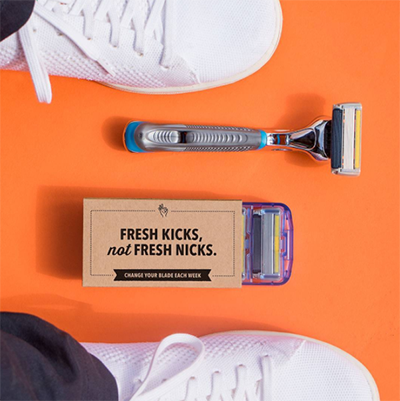 Source
Source
At this point, Dollar Shave Club's (DSC) inaugural video is legendary. My first reaction to a shaving subscription service was, "huh?" But with a single video, DSC flawlessly spoke to shaver pain points, poked fun at themselves, and announced to the world that they were ready to shake up a previously forgettable industry
Co-founder Michael Dubin wrote the video, starred in it, and had a friend shoot it in a single day for less than $4,500. It crashed the company's servers 90 minutes after it went live and catapulted the company to become the second-largest men's razor seller in America.
Viral best practice: Don't be afraid to poke fun at yourself
That video has been viewed over 22 million times, and DSC has 1.1 million subscribers and growing. They earned a $615 million valuation in 2015, and in 2016 they were acquired by Unilever for $1 billion dollars cash. They continue with successful marketing, expertly branded packaging, and a unique presence in an industry that has finally been woken up. All thanks (in part) to a video that poked fun at the company while educating their consumer.
16. Chatbooks
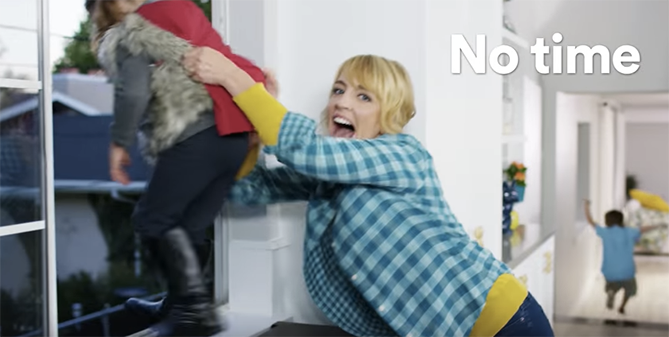 Source
Source
A four-minute viral video? It goes against every 15-, 30-, and 45-second best practice in the book, but boy did it pay off for Utah-based subscription photo service Chatbooks. The video educates its viewer on how to use a relatively new app that turns your photos into albums so you don't have to.
Why was it so successful? They nail their buyer persona. The video features a busy, realistic mom. She speaks to the audience with all the advice, sarcasm, and "I get it, I've been there" relatability that you'd look for from a fellow cool mom. It closes with a catchy tagline: "done is better than perfect."
Chatbooks sold 1 million subscriptions in its first 18 months. It's racked up over 1 million views on YouTube and the company is pushing 200,000 "likes" on Facebook. They continue to put out honest, pain-point driven videos featuring the same now-recognizable mom.
Viral best practice: Get detailed and personal with your personas
It's easy to phone in your user personas. Instead of just targeting "moms," Chatbooks clearly thought through how that mom thinks, what she worries about during the day, how she's spending her time, and how photos figure into her hectic schedule. The result? A video their target audience couldn't help but share.
The Next Time Your Boss Asks for a Viral Campaign …
It's nearly impossible to know what will go viral, and trying for that elusive result will usually come across as forced and futile.
Instead, research your target audience, decide if you can expand that audience, and create campaigns that are thoughtful, actionable, and relevant. But before you launch, make sure you're prepared for the maelstrom that could follow. It's always smart to have a PR plan in place should the worst (or the best) happen.
Check out the webinar below by HubSpot Academy featuring a member of BuzzFeed's video team, and how she's managed to amass more than half abillion views from her content (with the right defenses for potential backlash).
As a final send-off, keep in mind that you shouldn't expect every piece of content you release thereafter to be equally successful. Continue to create content that resonates with your audience and you'll do just fine.
from Marketing https://ift.tt/2oHLfDp

No comments:
Post a Comment